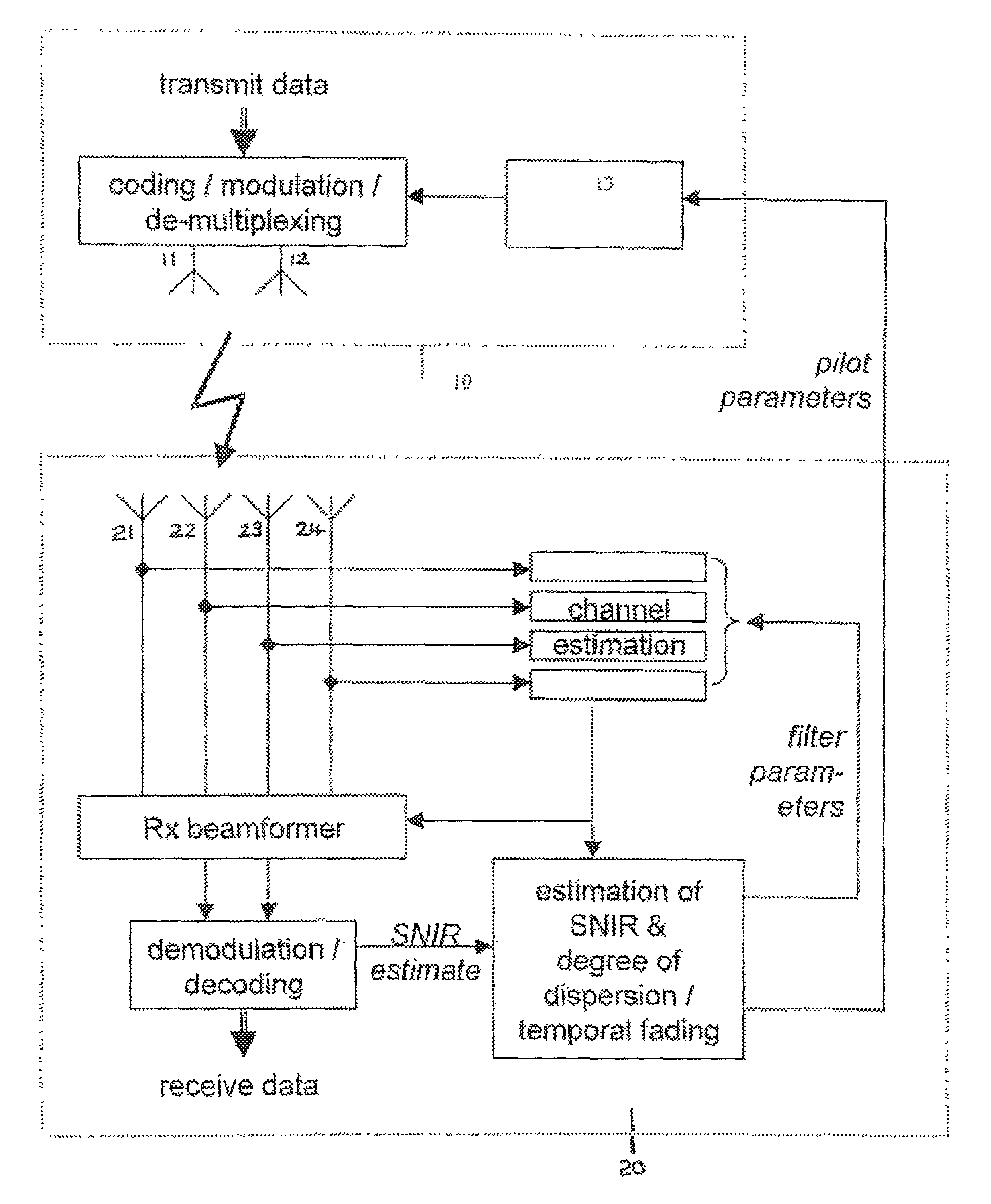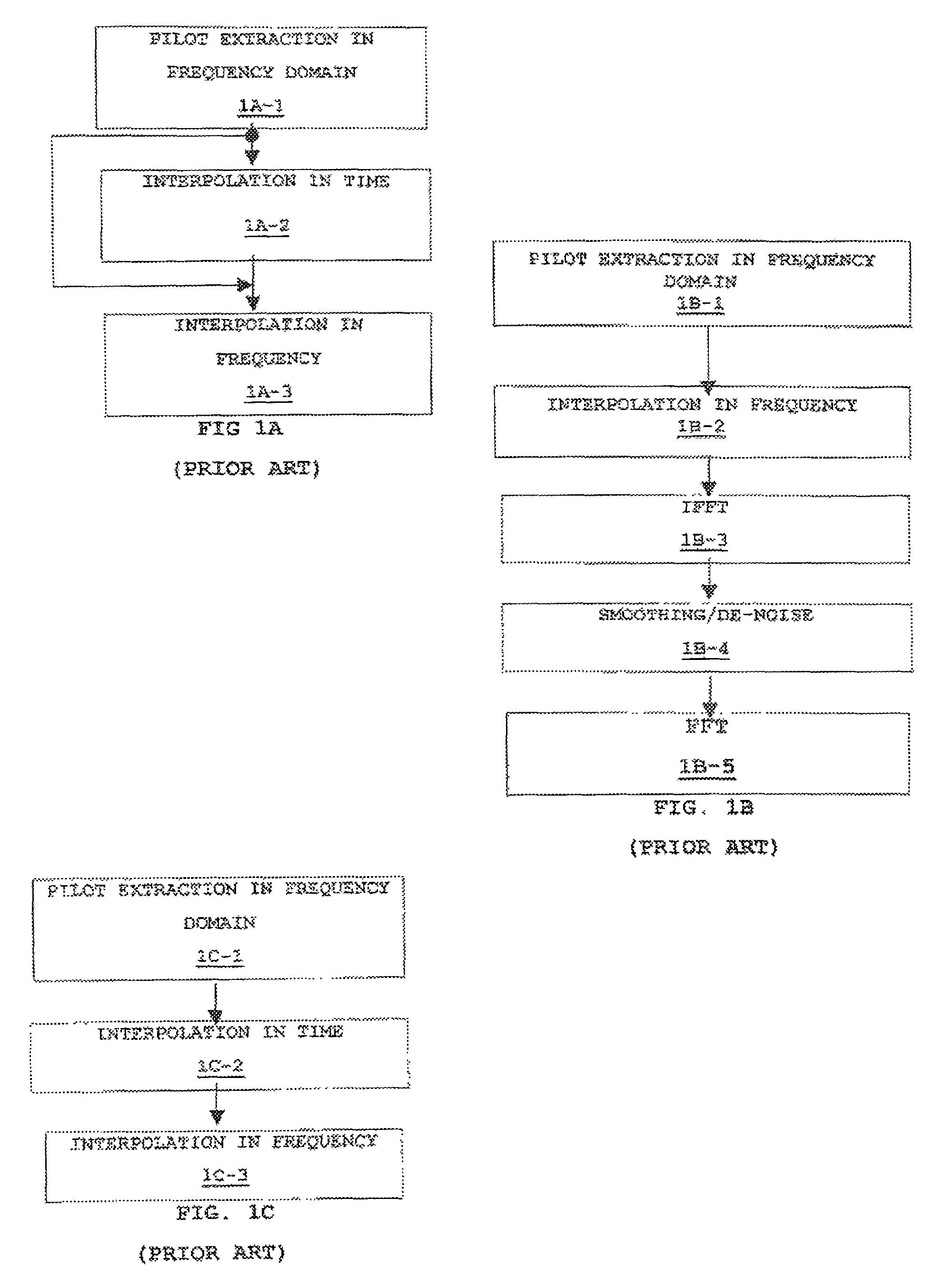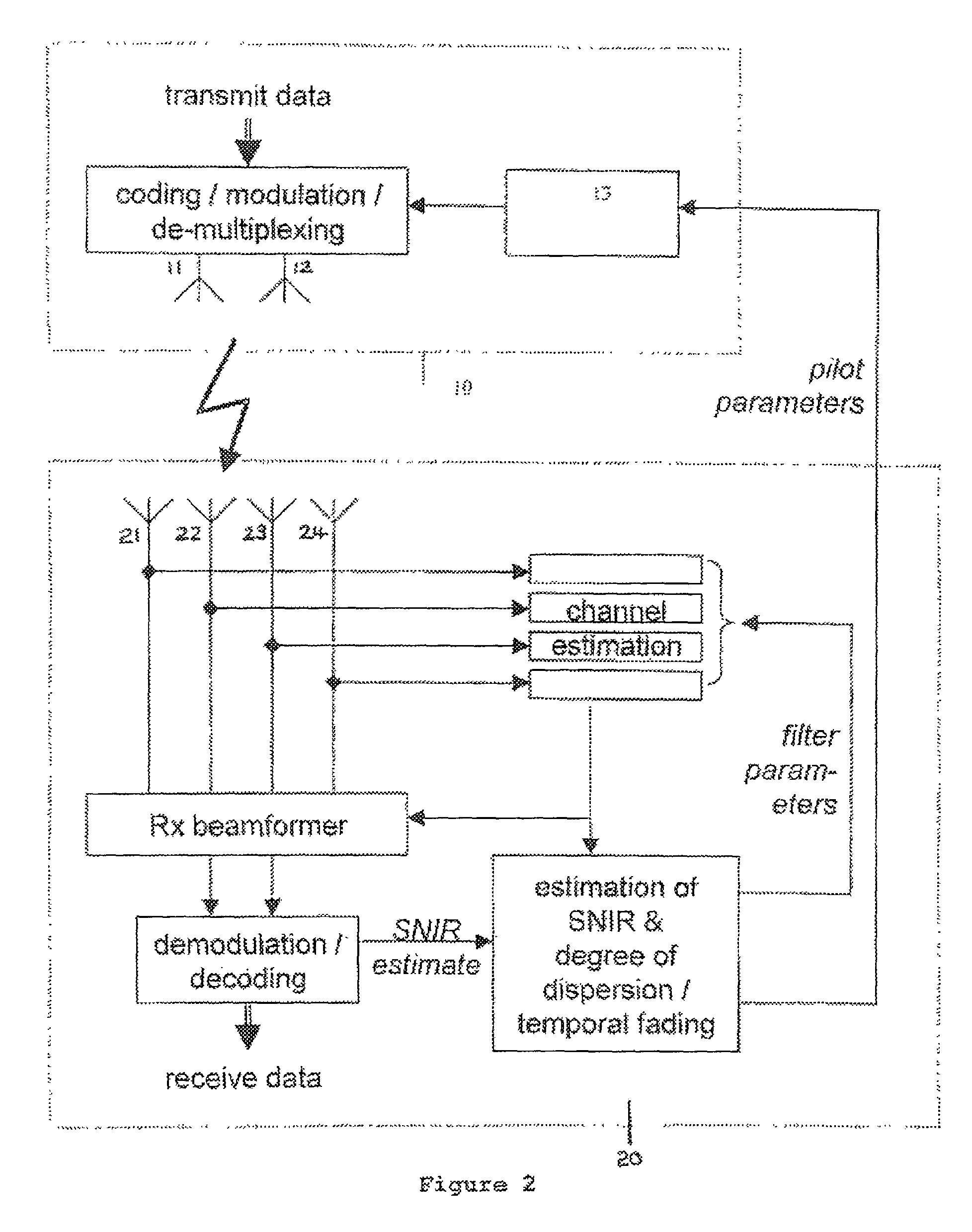Scattered pilot and filtering for channel estimation
a pilot and channel estimation technology, applied in the field of scattering pilots and filtering for channel estimation, can solve the problems of only suitable patterns, difficulty in completing minimum overhead, and needing a relatively high density of pilots and a completed interpolator, so as to improve channel estimation, improve network performance, and increase the value of such services
- Summary
- Abstract
- Description
- Claims
- Application Information
AI Technical Summary
Benefits of technology
Problems solved by technology
Method used
Image
Examples
Embodiment Construction
[0044]The system illustrated in FIG. 2 shows the downlink of a MIMO-OFDM system, wherein the base station 10 is transmitting data to a particular User Equipment (UE) 20. By way of example, a 2:4 MIMO scheme is shown—i.e. there are two transmit antennas 11, 12 at the base station 10, and four receive antennas 21, 22, 23, 24 at the UE 20. Data to be transmitted to the UE 20 is first coded and modulated, and then de-multiplexed onto the two transmit antennas 11, 12. This de-multiplexing stage can also be performed before the coding and modulation, if it is desirable to use, for example, a different modulation and coding scheme (MCS) on each transmitter.
[0045]In addition to the data, a scattered pilot is inserted by pilot insertion module 13, as shown in FIG. 2. This essentially involves the transmission of known pilot symbols at regular points in the OFDM frame, in both time and frequency, in order to allow the UE to determine the channel responses. A possible arrangement is given in F...
PUM
 Login to View More
Login to View More Abstract
Description
Claims
Application Information
 Login to View More
Login to View More - R&D
- Intellectual Property
- Life Sciences
- Materials
- Tech Scout
- Unparalleled Data Quality
- Higher Quality Content
- 60% Fewer Hallucinations
Browse by: Latest US Patents, China's latest patents, Technical Efficacy Thesaurus, Application Domain, Technology Topic, Popular Technical Reports.
© 2025 PatSnap. All rights reserved.Legal|Privacy policy|Modern Slavery Act Transparency Statement|Sitemap|About US| Contact US: help@patsnap.com



